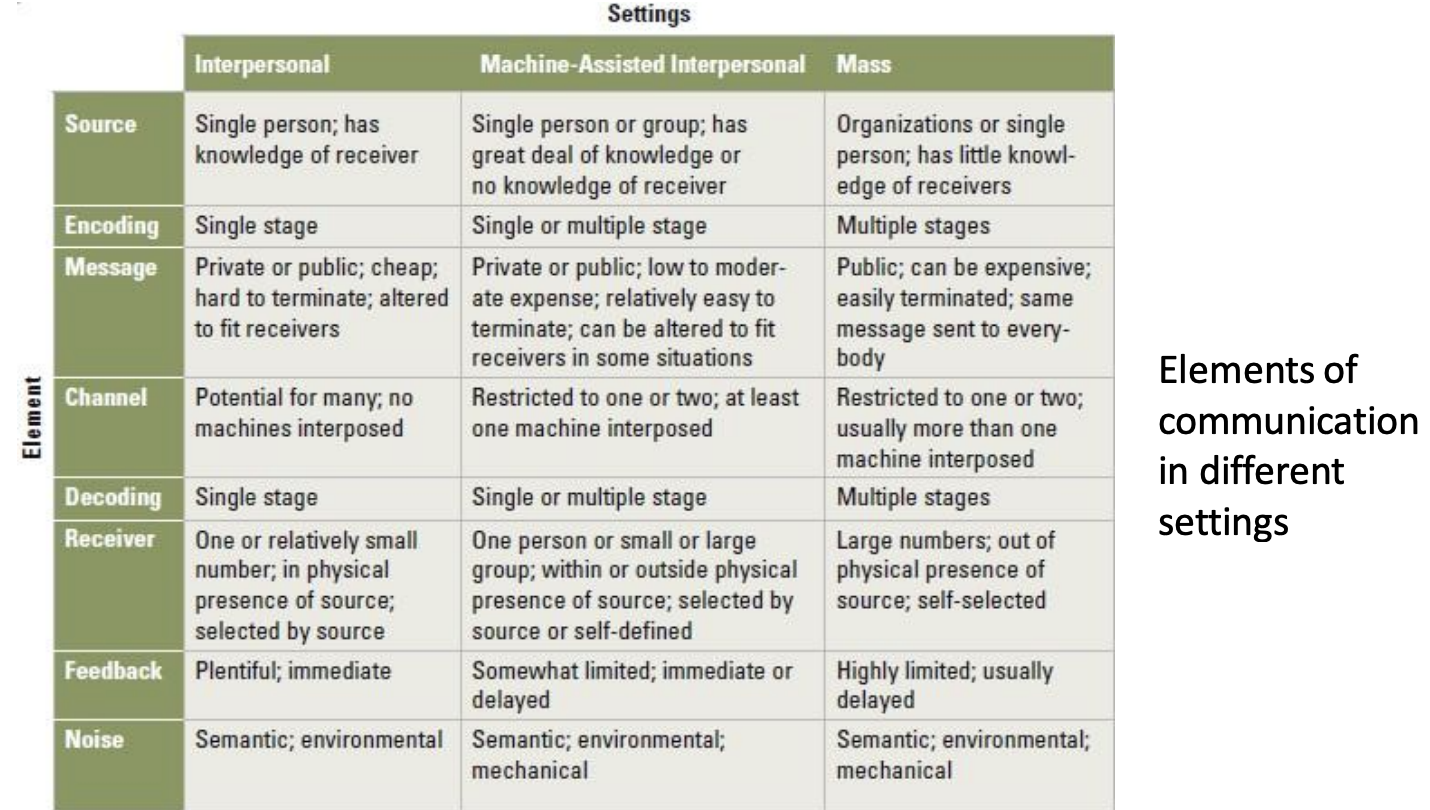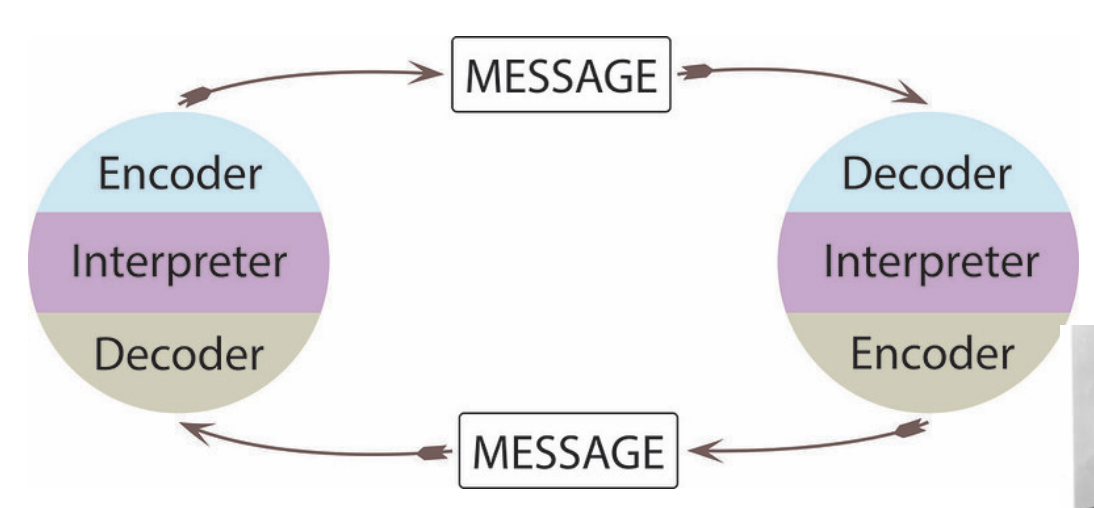#01 INTRODUCTION TO MASS COMMUNICATION
1/15
There's no tags or description
Looks like no tags are added yet.
Name | Mastery | Learn | Test | Matching | Spaced |
|---|
No study sessions yet.
16 Terms
Definition of Communication
The basic communication process is when a a source sends a. message through a medium to a receiver to produce some form of effect.
What is Communication?
Communication is the process of creating shared meaning
Types of Communication
Intrapersonal, Interpersonal, Machine-Assisted Interpersonal Communication, Mass Communication

Intrapersonal
Communication with oneself; thoughts/personal narrative
Interpersonal
private between two people
public to address a crowd
Individual or group communication (without the aid of a mechanical device)
Messages can also be crafted to their specific targets
Decoding one- step process by receivers
Immediate feedback
Noise – semantic or environmental
Machine-Assisted Interpersonal Communication
Technology assisted communication
Combines characteristics of both the interpersonal and mass communication situations
Involves the usage of media and advance technology to communicate
(eg. Email, zoom, meet, skype, teams, facebook, whatsapp, instagram, etc)
Mass Communication
Mass communication refers to the process by which a complex organization with the aid of one or more machines produces and transmits public messages that are directed at large, heterogeneous (unlike) and scattered audiences
Models of Communication
1.Harold Lasswell Model (1948)
2. Schramm’s Model of Communication (1954) & Osgood and Schramm’s Model of Communication
3.The Shannon-Weaver Model (1948)
Harold Lasswell Model (1948)
One- way communication resulting in an effect/response.
Harold Lasswell's 1948 communication model is a fundamental framework that analyzes any communication act by answering five key questions: "Who says what, in which channel, to whom, with what effect?". The model identifies five components of communication: the communicator (who), the message (what), the medium (channel), the audience (to whom), and the impact (effect). It is considered a linear, one-way model
Schramm’s Model of Communication (1954) & Osgood and Schramm’s Model of Communication
Schramm's 1954 model and the Osgood-Schramm model (also from 1954) are essentially the same, both presenting communication as a circular, two-way process that accounts for feedback and the "field of experience". The models were developed by Wilbur Schramm, who adapted a more mathematical concept and emphasized the encoder, decoder, and interpreter roles, along with the importance of shared understanding between participants.

3.The Shannon-Weaver Model (1948)
A more complete model of the communication process

Noise and Interference
→1. Environmental/ Physical Noise
→2. Semantic Noise
→3. Mechanical/ Technological Noise
Environmental/ Physical Noise
Sources of noise that are external to the communication process
(Eg. Loud background music, small fonts, poor color choice)
Semantic Noise
Confusion caused by using words or phrases that the audience cannot understand or might misinterpret
Mechanical/ Technological Noise
When the device you are using inadvertently changes the message you want to send
(can include the incorrect use of emojis or autocorrect function)
Why People Use Mass Media
Inform the masses
Persuade the masses
Amuse the masses
Enlighten the masses